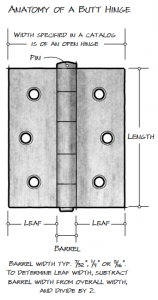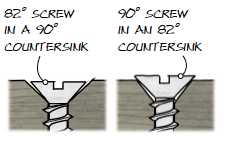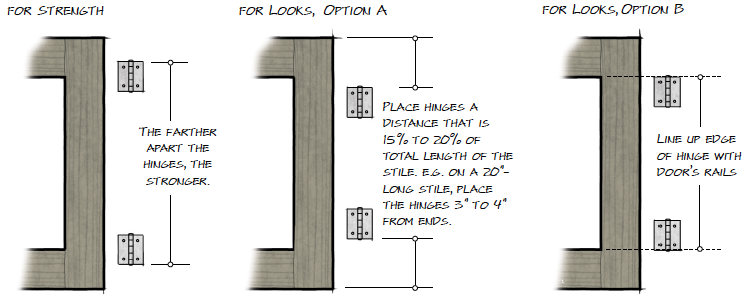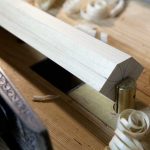We may receive a commission when you use our affiliate links. However, this does not impact our recommendations.
 Stamped vs. Extruded vs. Cast hinges
Stamped vs. Extruded vs. Cast hinges
• Inexpensive hinges are usually stamped out of thin steel or brass plates.
• Extruded hinges are molten metal forced into a die under high pressure. They are thicker, sturdier and more expensive.
• Cast bronze hinges are among the most expensive — bronze is melted and poured into a mold, resulting in a perfectly smooth surface and perfectly aligned pins.
How Many Hinges?
• Doors up to 24″ high – two hinges. Each hinge is 2″ in length or smaller.
• Doors up to 36″ high – two hinges. Each hinge up to 3″ long.
• Doors 36″ and higher – usually three hinges, 3″ long or bigger.
Countersink Angles 
This refers to the angle of the edge of the screw holes in the hinge leaves. Good hinges come with screws that match that angle (standard is 82° in the U.S., 90° in the U.K.) But, countersink bits can be used to modify the holes to accept any number of angles on screws. It’s important that the screw match the hole — if the angle on the screw is more than that of the hole, the screw won’t seat. Thus the hinge won’t close flush. If the angle on the screw head is less than in the leaf hole, the screw won’t have the strongest possible holding power because the head will have room to wiggle around.
– Popular Woodworking editors; special thanks to Whitechapel Ltd. and Robin Lee of Lee Valley Tools for technical assistance; illustrations by Matt Bantly
From the Spring 2008 issue of Woodworking Magazine
Here are some supplies and tools we find essential in our everyday work around the shop. We may receive a commission from sales referred by our links; however, we have carefully selected these products for their usefulness and quality.








